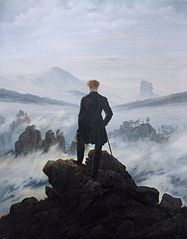
The sublime is derived from the 18th century philosophy of Immanuel Kant and Edmund Burke (for example, see Hirshberg 1994). As Coyne describes it (1999, 61-2), the sublime consists of:
… awe and admiration at the various spectacles of nature that raise the soul above the vulgar and the commonplace, arousing emotions akin to fear rather than merely joy … manifested in the contemplation of raging cataracts, perilous views from mountaintops, the forces of nature, expanses of uninhabitable landscapes, the infinity of space and time, but also breathtaking artificial structures and powerful machinery … the concept of the romantic sublime provided a substitute for Christian cosmology displaced by the growth of science … The romantic quest frequently discovered the sublime in the technological.


